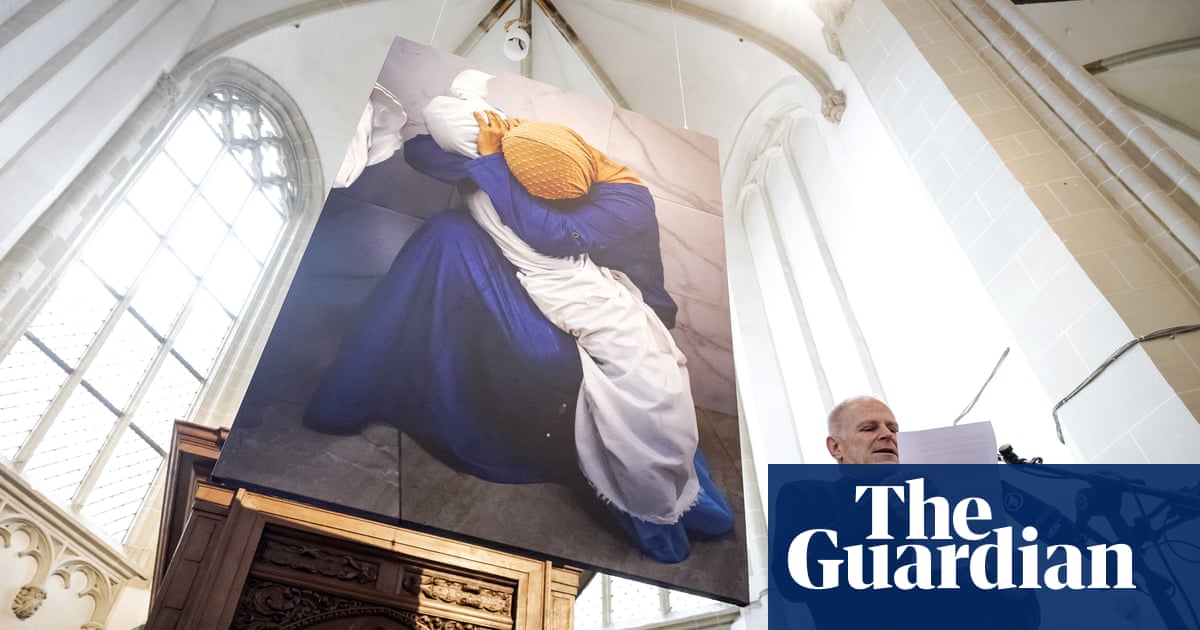World
War, grief and hope: the stories behind the World Press Photo award-winners

Photographs documenting the wars in Gaza and Ukraine, migration, family and dementia have topped this year’s World Press Photo awards – one of the world’s most prestigious photography competitions.
Mohammed Salem, Lee-Ann Olwage, Alejandro Cegarra, and Julia Kochetova have been announced as the winners of this year’s competition, which is run by the World Press Photo Foundation – an independent, not-for-profit organisation that celebrates the importance of press and documentary photography.
The four winners, who were selected from a total of 61,062 entries from 3,851 photographers in 130 countries, were praised for their courage, skill and empathy.
Salem won the photo of the year award for his photograph A Palestinian Woman Embraces the Body of her Niece, which was published by Reuters. It shows Inas Abu Maamar cradling the body of her five-year-old niece Saly, who was killed, along with her mother and sister, when an Israeli missile struck their home in Khan Younis, Gaza.
Salem, who is Palestinian, described the photo – taken days after his own wife had given birth – as a “powerful and sad moment that sums up the broader sense of what was happening in the Gaza Strip”. The jury said the image had been composed with care and respect, offering both a metaphorical and literal glimpse into unimaginable loss.
South African photographer Olwage won photo story of the year for Valim-babena, published by the German magazine GEO. The selection of images show “Dada Paul”, who has lived with dementia for 11 years, getting ready for church in Madagascar with his granddaughter Odliatemix. The title is a Malagasy expression referring to children’s duties towards their parents.
In Madagascar, lack of public awareness surrounding dementia means that people displaying symptoms of memory loss are often stigmatised. The jury said the story “tackles a universal health issue through the lens of family and care.”
Venezuelan photographer Cegarra won the long-term project award for The Two Walls, published by the New York Times and Bloomberg, which showcased the resilience of migrants. The project drew from Cegarra’s first-hand experience of migrating from Venezuela to Mexico in 2017. The jury praised Cegarra’s sensitive, human-centred perspective.
Kochetova, from Ukraine, won the open format award for War Is Personal. Amid the tens of thousands of civilian and military casualties arising from Russia’s war in Ukraine, Kochetova created a web-based project that brings together photojournalism with the personal documentary style of a diary to show the everyday realities of war. The project also includes poetry, audio clips, and music in collaboration with a Ukrainian illustrator and DJ.
Kochetova, who is a regular contributor to the Guardian, said she had not made a choice to photograph war, but “war started and it always was mine”. She said since the moment Russia invaded Ukraine in 2014 she had been thinking about how the media shapes stories.
“I wanted to make the story of Russian-Ukrainian war as close as is possible to the reader around the globe,” she said. “That’s why I actually chose the Signal chat as the form – the most secure messenger, usually used by soldiers. It makes these messages feel as close as if it was your phone, your story and your war. It makes words, eyes and hands personal. It gives a face and name to this war – something what we lose in between headlines.”
But Kochetova said winning the prize “doesn’t help my country win”. A day before the official announcement of the award, she added, “Chernihiv city centre was hit by Russians, killing 17 people and injuring more than 60. And it’s happening daily.
“As a Ukrainian storyteller, I only could hope that this recognition will be the important reminder for the world that war is not over.”
The images will be shown as part of the World Press Photo’s annual exhibition, which is expected to go to more than 60 locations worldwide, including Amsterdam, London, Mexico City, Rio de Janeiro, Hong Kong and Sydney.
Fiona Shields, the chair of the global jury and head of photography at the Guardian, said the winning images had “such power to convey a specific moment, while also resonating beyond their own subject and time”.
She said the photo of the year “truly encapsulates this sense of impact; it is incredibly moving to view and at the same time an argument for peace, which is extremely powerful when peace can sometimes feel like an unlikely fantasy.”
Joumana El Zein Khoury, executive director of World Press Photo, said the winning photographers were “intimately and personally familiar with their topics”.
El Zein Khoury also highlighted the risky nature of press and documentary photography. “This past year, the death toll in Gaza pushed the number of journalists killed to a near-record high. It is important to recognise the trauma they have experienced to show the world the humanitarian impact of the war.”
More than three-quarters of the 99 journalists and media workers who died worldwide in 2023 were killed in the Israel-Gaza war, making it one of the deadliest years on record.
This year’s World Press Photo Exhibition will be at Borough Yards, London, from 3 May to 27 May

/static.texastribune.org/media/files/f5fdb1dff4d6fd788cba66ebaefe08d0/Paxton_GOP_Convention_2018_BD_TT.jpg)






